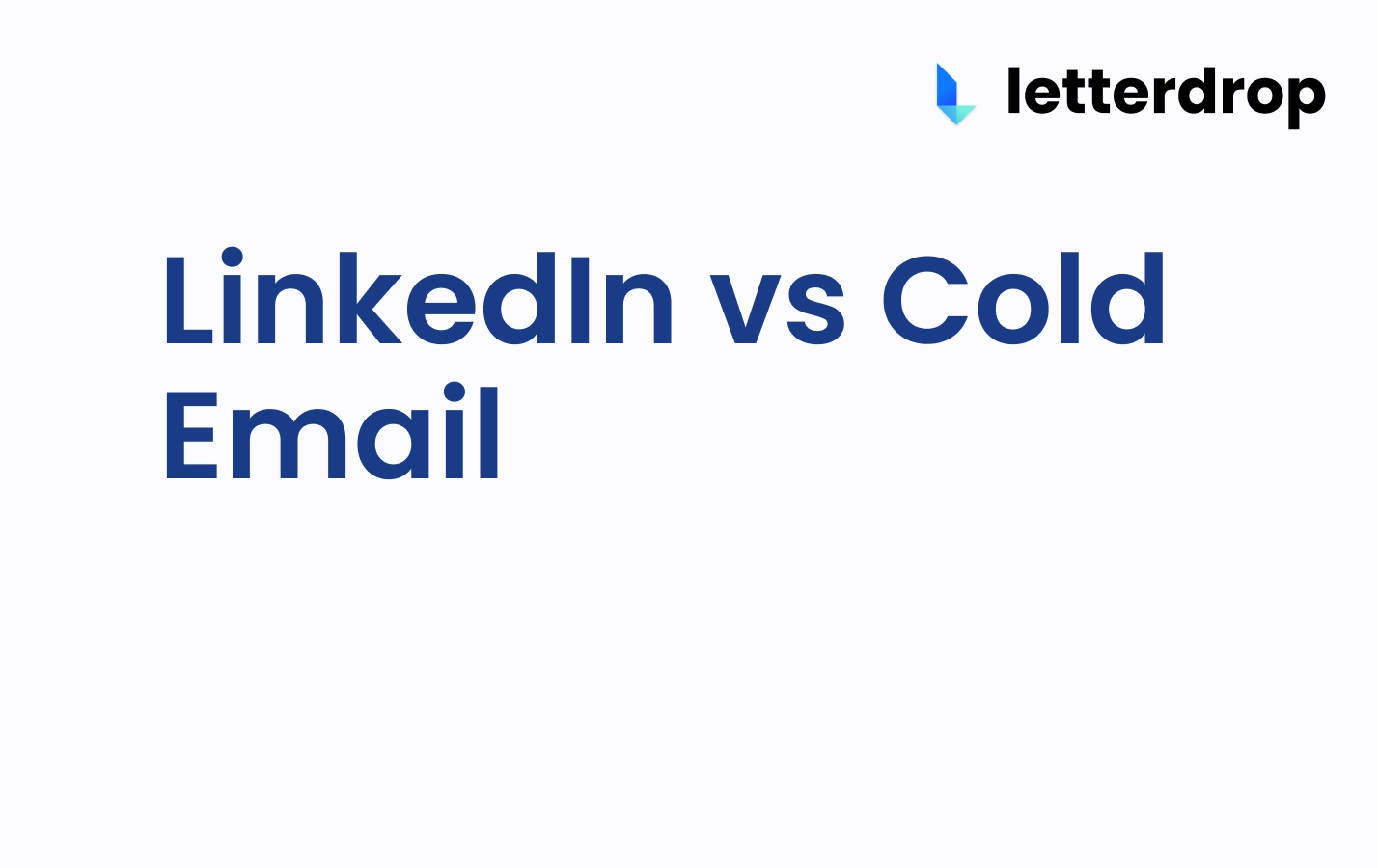LinkedIn Inbound Guide for 2025
Who Is This Guide For?
If you sell to mid-market or enterprise buyers, you're in the right place. You might be a:
- Head of Marketing
- Head of Demand Gen
- CEO or Founder
Follow this guide to build a low-CAC source of inbound pipeline for your business that's far more efficient and almost as scalable as ads.
Real results compound over time and are most effective when you get your entire customer-facing team involved.
Why Invest in LinkedIn Organic?
1. Generate Real Inbound Pipeline — Not Just Brand Awareness
LinkedIn is more than a brand-awareness tool. Most teams don’t know how to leverage it nor do the know how to measure LinkedIn’s potential to generate pipeline.
2. LinkedIn Ads: Expensive and Inefficient
How much do you currently spend on LinkedIn ads?
On average, companies spend between $5-$8 per 1,000 impressions.
Ads quickly become expensive, especially when you take into account that they're poorly targeted and that prospects are wilfully "ad-blind".
Instead, get folks who are already connected to prospects — like your execs, sales team, and other customer-facing folks — to share thought leadership posts. They’ll reach the right people and can even accelerate existing sales cycles, priming people for conversations.
A lot of companies don't invest in LinkedIn in the first place because they don't have a way to measure social selling and properly tie LinkedIn activity to ROI.
We created a forecasting model that allows you to see estimated ARR from LinkedIn:
People posting (CEO, AEs, BDRs) x impressions with buyers / post x % buyers who see that and come inbound x inbound win rate
= $X revenue from inbound pipeline.

Key Components of Success
- A profile that is a sales page
- Regular, relevant, and educational content
- Maxed out connection requests to best-fit customers
- Get your whole customer-facing team involved
What to Expect
Estimated Time: 3 hours a week
By following the above components, you'll see:
- more inbound leads where self-attribution says "LinkedIn"
- more visitors to your website (hard to attribute back to LinkedIn unless you use UTM parameters on all links in your bio and profile)
- inbound comments or DMs asking if they can talk
A wave of companies like Gong, Github, Microsoft, Dreamdata, RB2B, TACK, and Apollo have made LinkedIn a primary pipeline driver.
More specifically:
- DreamData drove $1M in pipeline directly attributed to organic social selling
- TACK has driven over $2M, thanks to a founder presence on LinkedIn ($1.2M in closed deals)
- RB2B drives $3.8M ARR in large part due to Adam Robinson's LinkedIn presence
W followers + X posts/week = Y impressions => Z inbound leads with lead source LinkedIn + leads where there is a touch point on LinkedIn before becoming a lead.
What Do You Need to Do It?
To carry out this strategy, you need the following:
- someone whose head is on the line if they don't get pipeline
- a maximum of three hours a week of time spend
- a source of ideas (sales calls, industry news, blogs)
- Sales Nav or a list of buyers
Step 1: Set up Your LinkedIn Profile to Be a Sales Page
Estimated Time: 1 hour
You want people landing on your LinkedIn page to take action and get one step closer to buying from you. It's not a place for your resume but is actually a sales page.
Your LinkedIn page should communicate:
- Who you are and what you talk about
- What you can help with
- Why anyone should follow you
Follow our in-depth guide on how to sell on LinkedIn on how to set up your profile — you can also check out this video where Mark Jung walks me through improvements I could make to my LinkedIn profile.
Here are the most important steps:
- Turn on Creator Mode, which makes people follow you as soon as they connect with you
- Have a professional profile picture
- Your tagline should include your role and what you help people do
- Include a clear CTA in your banner
- Link to your website
- Make your "About" section helpful to prospects and help them qualify themselves as buyers

Step 2: Post Relevant Content Consistently
Estimated time: 25 minutes per week to draft and post
Consistent posting builds awareness and keeps you top of mind with prospects.
(Avoid reposts and self-promotion — they do nothing for you.)
What Should You Post?
One of the biggest objections to social selling is not knowing what to post.
The goal is not to go viral, it's to educate people in your network.
Types of content to post include:
- how you're helping existing customers
- questions prospects come to you with
- thoughts on industry trends/news
- case studies - videos and quotes, don't just link to blog posts
- product demos - doesn't need to be polished
You can find all this information from quick calls with your best-fit customers.
If you can use video clips from you or your customers talking about them, even better.

Call transcripts from software like Gong or Fireflies will be your best friends here — and if you use Letterdrop, it can generate first drafts of LinkedIn posts directly from your sales calls.
We created some templates for effective LinkedIn posts that you can copy.
How Often Should You Post?
Aim to post once a day, three to five days a week, sharing content that addresses the questions and problems you’ve gathered from your ICP.
We've created a three-day and five-day LinkedIn content calendar for you to follow — it also includes some post templates.

Step 3: Connect with Best-Fit Prospects
Estimated Time: Half a day to set up Sales Navigator and LinkedIn Helper (optional). 15 minutes a day ongoing after that. That's 5 hrs per month.
Estimated Cost: $115 per month for tools like Sales Nav and LinkedIn Helper (if you're in sales and marketing, no one should flinch at this small expense.)
You have a limit of 100-150 connection requests a week. That's 5-7k a year.
They now follow you, and you can DM them.
If you don't follow steps one, two, and three before this, people will be less likely to accept connection requests.
If you don't do this step, posting content will be less effective since it will just go to your audience of friends instead of actual buyers.
You want to max-out your connection requests in order to build an audience that will care about what you have to say.
Use Sales Navigator to find your ICP help you build a list of who you're prospecting to and a buying committee of accounts.
Pro tip: Send blank connection requests to avoid coming across as salesy. We still get 20% acceptance rate this way.
Step 4: Get Your Whole Customer-Facing Team Involved
If you truly want to scale and create a surround sound effect around your target customers, you'll need to get your team involved.
Specifically, you need the networks of your customer-facing and exec teams.
As for how to get execs to post to LinkedIn, any sane leadership team would be incredibly excited for someone to have:
- identified a growth opportunity for the business
- done their homework and run an initial test in a scrappy manner
- have quantifiable results and make a proposal to scale it
Build Pipeline From LinkedIn Without Guesswork
Whether you’re a founder posting alone or a CMO scaling a team, Letterdrop turns customer conversations into posts that drive inbound leads and surfaces warm buyers your SDRs would otherwise miss.
Subscribe to newsletter
No-BS GTM strategies to build more pipeline in your inbox every week
Related Reading
Some other posts you might find helpful
















